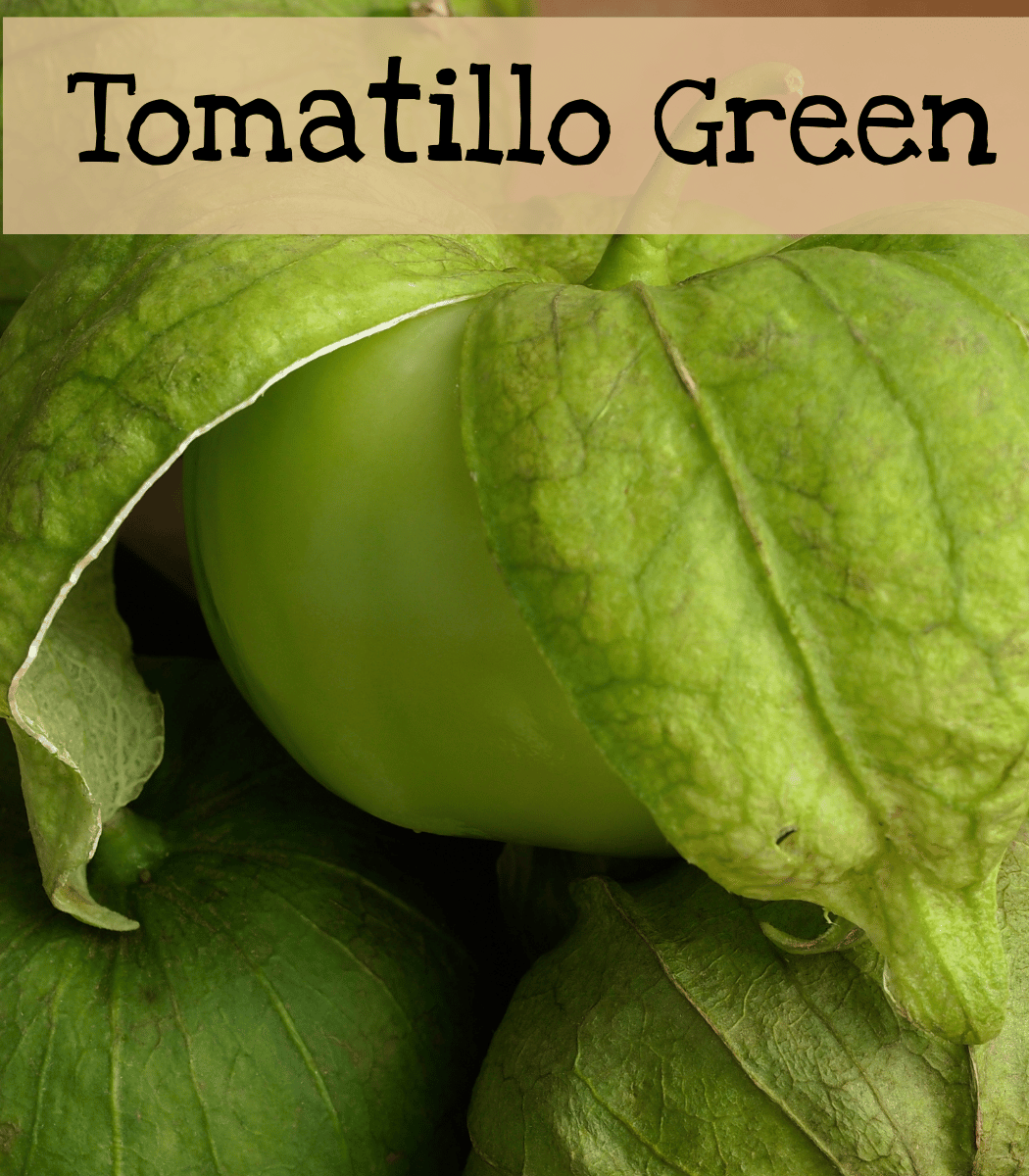
Tomatillo
Essential in many salsas and chutneys, the tomatillo or husk tomato has very similar care to tomatoes.
|
Amarylla; Chupon De Malinalco; Gigante Verde; Purple; Río Grande Verde |
|
Physalis philadelphica: Amarylla; Chupon De Malinalco Physalis ixocarpa: Gigante Verde; Purple; Reo Grande Verde |
|
Intermediate |
|
Difficult |
|
6 years if properly stored |
|
Annual |
|
7-14 days |
|
None |
|
1/4 inch |
|
3-4′ |
|
Full Sun |
|
2-3” ripens to yellow-green |
|
60-100 days |
|
March, April, and May |
|
Yes |

Growing Tips


When to Start
Spring: Start indoors 6-10 weeks before the last frost. (March for Jefferson, GA)
Transplant: 1-2 weeks after all danger of frost has passed. (Mid-May for Jefferson, GA.)
Direct Sow: 1-2 weeks after all danger of frost has passed. (Mid-May for Jefferson, GA.)
How to Start
Seeds normally take six to ten weeks of growing and must be hardened off before they are transplanted into the garden. They can be started in small flats and then transplanted into containers with adequate drainage holes once seedlings have become sturdy enough. They prefer bottom heat when starting from seed (75-95 F). Use seed starting mix and sow 2-3 seeds per cell to a depth of 1/4 inch. Keep the soil moist but not soggy. Thin the seedlings to the strongest seedling and pinch the tops to create stronger, stockier plants.
Tomatillo can be direct sown. However, they like soil temperatures from 75-95 F. Wait until 2 weeks after the last frost for soil temperatures to have warmed before direct sowing. Sow 2-3 seeds and thin to the strongest seedling. Please note: when direct sowing seeds versus starting them indoors, your harvest will be later. Sow 2-3 feet apart.
Transplant outdoors 1-2 weeks after danger of frost has passed and soil temps are 75-85°F (2 weeks after the last frost, mid-May for GA). Plant part of the stem, as like tomatoes, the stem of the tomatillo will produce surface roots. These surface roots will help stabilize the plant and create a more robust root system.
Care
The care for tomatillos is very similar to tomatoes. Plant in full sun and protect from wind. Stake or cage them for support, as they can reach 3-4 feet high. They can be planted in a container. Just steak and prune as needed. Tomatillos don’t thrive in cool conditions and like warm soil. Space plants 2-3 feet apart.
Prune the lowest leaves and keep branches off the ground, as this will help reduce the risk of fungus. Tomatillos are more drought tolerant than tomatoes, but even still an inch of water per week is best. Water evenly as this will help prevent them from splitting. For more advice see “12 Tomato Planting Hacks”. The link is below.
Harvest
Tomatillos come in various sizes and colors. All varieties have a papery husk around the fruit that begins to dry when fruits are maturing. Harvest tomatillos when they are firm to the touch but seem to give a little. This is indicated when the paper wrapper beaks open and the fruit easily pulls from the plant. Check them for mold or other diseases and discard those.
Tomatillos are prolific and should keep producing until a frost.
Pest Management
Flea beetles can be a problem. Try trap cropping with bok choy to help control the pests. For information on how to trap crop and the methods, see “Trap Cropping“
Seed Saving

Isolation Distance
Separate varieties by 800-1600 feet.
Instructions
Tomatillo seeds are ripe when the fruit is ripe. Upon harvesting, tomatillo seeds are best fermented to remove a germination-inhibiting gel that covers the seeds and to kill diseases. In nature, fermentation of fallen ripe fruits removes this gel, and this process is imitated when preparing tomato seeds.
Step 1: Make a label with the variety of the tomatillo and any traits you noticed. (Resistant to blight, had really good flavor, bigger size, etc.) Squeeze the pulp from the ripe tomato into a bowl, keeping the label with the bowl. If there is not enough liquid, add enough water to help the seeds separate from the pulp.
Step 2: Let it sit in a warm spot to ferment for 2-3 days and allow mold to form. (Yes, it stinks and is gross. Put it somewhere where you won’t pass by it very often.) TIP: use a tall canning jar. This will help control some of the odor and allow you to see the progress of the seeds. Cover the top of the jar with a cheesecloth or a paper towel, securing it with a rubber band, to keep any insects out and yet allow some airflow.
Step 3: Once the layer of mold has formed, lift it off with a fork. This will make rinsing easier. Add some water and mix or shake the jar. The viable, good seeds will sink to the bottom and the bad seeds, which won’t germinate, will float. Skim off the bad seeds and toss. Pour the rest of the seed/pulp mixture through a strainer and rinse. Remove any remaining bits of mold and pulp to leave only clean seeds.
Step 4: Dry your tomatillo seeds on a piece of glass or a shiny plate—the wet seeds will stick to paper and be difficult to remove without damaging them. Keep the label with the seeds. (All tomatillo seeds look the same.) Shake the seeds daily to make sure they dry evenly. Don’t speed up the drying process or you could damage or kill the seeds. Once they are thoroughly dry, store dried seeds in labeled, paper seed bags. Drying could take a week or more.

Features
- Drought tolerant
- Container friendly
- Often used in green salsa (salsa verde) when immature and tangy
- Amarylla: Heirloom. Yellow, firm fruit when ripe. Thrives in cooler summer locations.
- Chupon De Malinalco: A Citrusy yellow color, pointed shape, and a sweet-tart flavor. Fruit grows to 4 inches long.
- Gigante Verde: Sweeter than regular tomatillos. Great for chili, salsa, and soups. 100 days.
- Purple: Heirloom. Prolific, large purple fruit. The more sun, the more purple the fruit. It is sweeter than green tomatillos.
- Rio Grande Verde: Heirloom. Determinate. Prolific, apple-green fruit. The medium-sized plants don’t require staking. These plants are not self-fertile. Plant a minimum of 2 to get fruit.

Tomatillos can be harvested before they are ripe (green or at first blush) and then ripened off the vine at temperatures above 70F.
